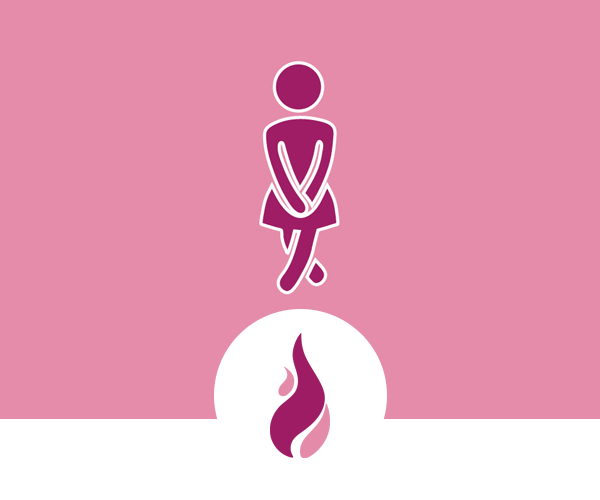How To Exercise Your Pelvic Floor

The pelvic floor is like a hammock at the base of your abdomen made up of muscles, ligaments, and connective tissues that support your bladder, bowel and uterus.
These muscles can weaken due to the loss of oestrogen during menopause leading to unwanted leaks especially when you laugh, cough, sneeze, or strain. Weak pelvic floor muscles can also lead to pelvic organ prolapse.
Stress urinary incontinence (SUI) is the most common type of incontinence and involves involuntary leakage on exertion, sneezing or coughing. 50% of menopausal women suffering from SUI and often avoid activities that cause it to happen and feel the need to wear protection for everyday activities.
Lower levels of oestrogen can also cause an over-active bladder, which happens when you are desperate to go to the loo and can’t hold on.
As we get older, our muscles naturally lose mass. This means that we have to actively work these muscles in order to keep them strong and active and the pelvic floor muscles are no different – so doing PF exercises needs to be part of your daily routine.
First you need to identify the right muscles. The simplest way to do this is to stop urination midstream – if you succeed, you’ve found your pelvic floor muscles. Only do this once or twice as it can increase your risk of a urinary tract infection (UTI). There are two types of pelvic floor muscle, slow twitch and fast twitch, and you can train them independently.
SLOW TWITCH
The slow twitch muscles need to be recruited smoothly and gently. Tighten the ring of muscles around your back passage as though preventing a bowel movement or wind escaping. Lift the muscles up inside, hold for a second and then relax slowly.
Tighten the muscles around your back passage again, now take this feeling through to your front passages. Lift the back and front passages up inside, hold for as many seconds as you can (up to a maximum of ten seconds). Relax the contraction and rest for four seconds then repeat up to 10 times.
FAST TWITCH
These muscles need to be able to react strongly and quickly, preventing leakage when you squeeze them tightly. See how many quick and strong contractions you can do, aim to increase this up to a maximum of ten repetitions. aiming to make the last repetition as strong as the first.
Aim to do your PF exercises 3 times a day alternating between slow and fast twitch. If there’s no improvement then do seek help from your GP; there are many different treatments such as vaginal pessaries that can improve muscle tone.
Lastly, did you know that during menopause the skin in the pelvic area becomes less acidic which makes it easier for bacteria to grow so you may find that you begin to get bladder or vaginal infections which always need treatment from your GP.